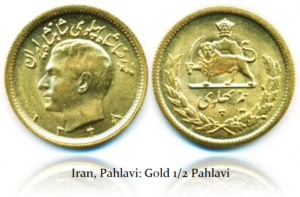Iran on the Brink: What the Future Holds for a Nation at the Crossroads

As we move into 2024, the geopolitical landscape surrounding Iran is fraught with tension and uncertainty. Recently, a query reached us about projections regarding Iran’s political trajectory, specifically regarding a potential decline leading to another revolution. Our insights at Extreme Investor Network suggest that the situation in Iran is indeed critical and warrants a closer look.
The Timeline of Transition and Turmoil
Historically, pivotal moments such as the 1952 uprising provide essential context for understanding the cyclical nature of political upheaval in Iran. As we approach 2024, which marks 72 years since that significant event, our analysis points to a likely crescendo in unrest. Many experts, including authoritative voices in the field, predict marked instability beginning this year, culminating in a collapse of the current regime by 2030—potentially falling even short of 2032.
Understanding the Dynamics of Power
The Iranian government, under Supreme Leader Ayatollah Ali Khamenei, faces significant challenges, not merely from internal dissent but also due to the shifting allegiances and strategies of regional players. Reports indicate that Turkey has advised both Iran and Russia to refrain from intervening in Syria, further destabilizing Iran’s position in the Middle East. This maneuvering hints at a broader checkmate in regional politics, where Iran finds itself increasingly isolated.
Factors Contributing to Iran’s Predicament
-
Economic Pressures: Sanctions and economic mismanagement have left Iran’s economy in a precarious state. Citizens are feeling the pinch, creating fertile ground for unrest that seeks to challenge the existing regime.
-
Protests and Resistance: The populace’s frustration with authoritarian rule is reaching a boiling point. Precedent shows that when public sentiment reaches this level of discontent, revolutions can erupt swiftly, confirming the predictions of imminent changes.
- Geopolitical Maneuvering: The international stage is witnessing a complex interplay of alliances and tensions. As we observe Turkey’s growing influence, it becomes clear that the traditional power structures in the Middle East are evolving, potentially sidelining Iranian interests.
What Lies Ahead?
As we analyze these events, it’s crucial to consider how they impact not just Iran but the global stage. The anticipated shift may indicate a broader political reset worldwide, where nations must adapt to rapidly changing dynamics. The specter of conflict looms large, as many leaders, including those in the U.S., face choices that could either escalate tensions or pave the way for negotiations.
At Extreme Investor Network, we remain vigilant, monitoring these developments closely. We understand that the ramifications extend beyond headlines; they directly affect investment strategies, foreign relations, and economic stability in the region.
Final Thoughts: Where Do We Go From Here?
While plans for conferences and discussions are still in flux—as we await potential shifts in U.S. politics—it’s clear that the situation in Iran deserves our attention. The forces at play are complex and interconnected, and the projections rely heavily on both domestic and international outcomes. As we steer through these uncertain waters, the insights provided here are just a glimpse into the thorough analysis found on our platform.
Stay tuned and stay informed. Your understanding of these global shifts will empower you to make more informed investment decisions in the future.
For more insights into world economics and investment strategies, visit our growing resource hub at Extreme Investor Network.

